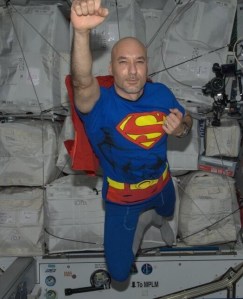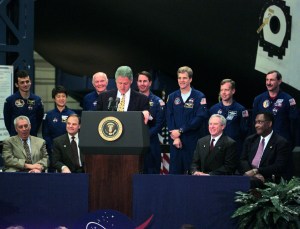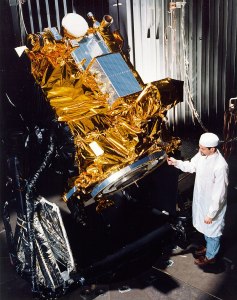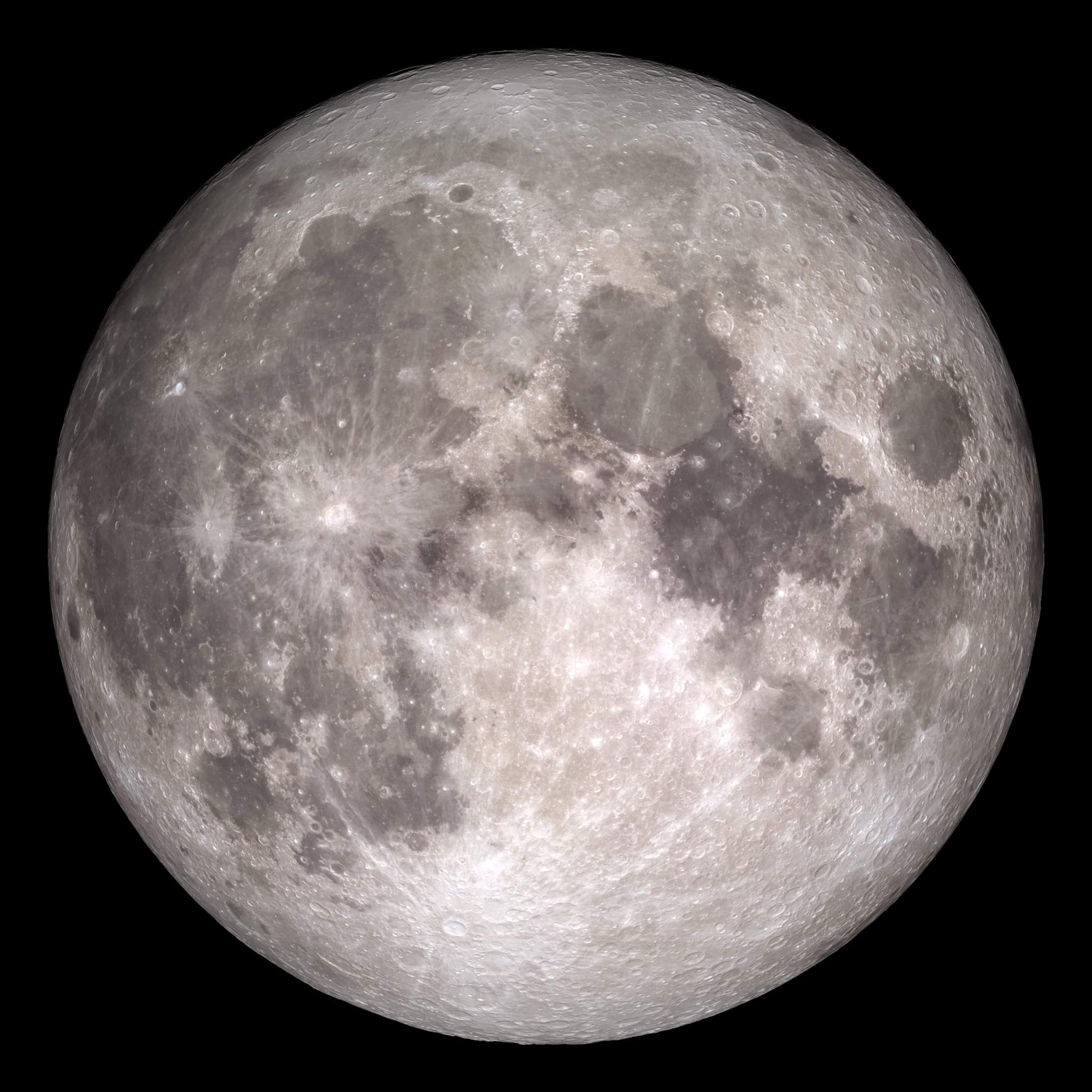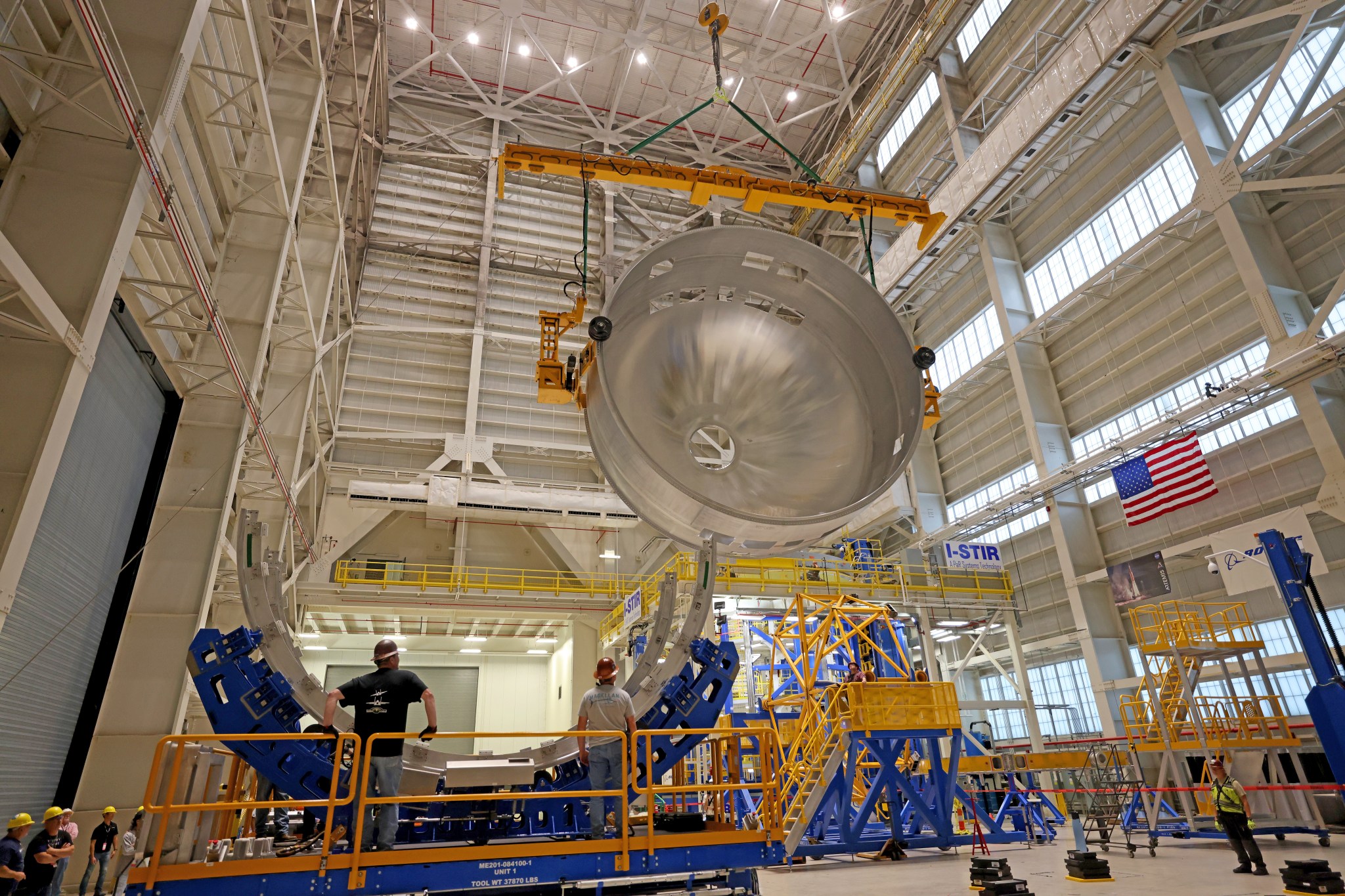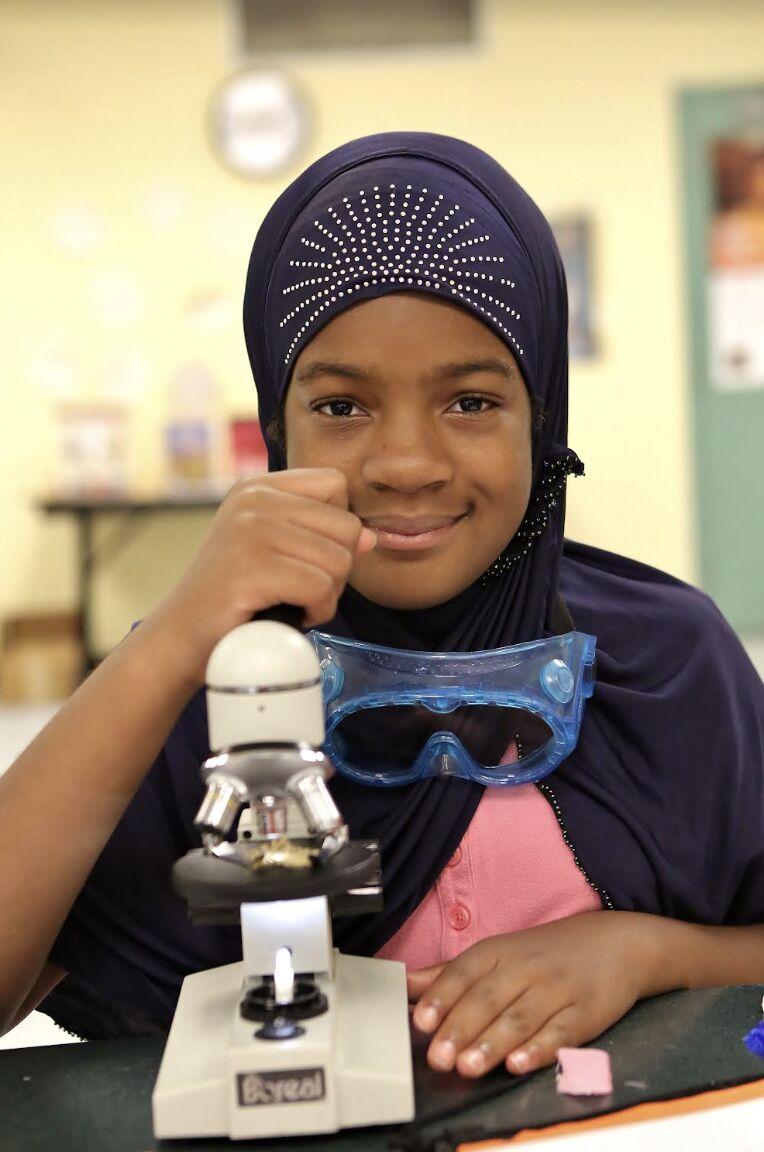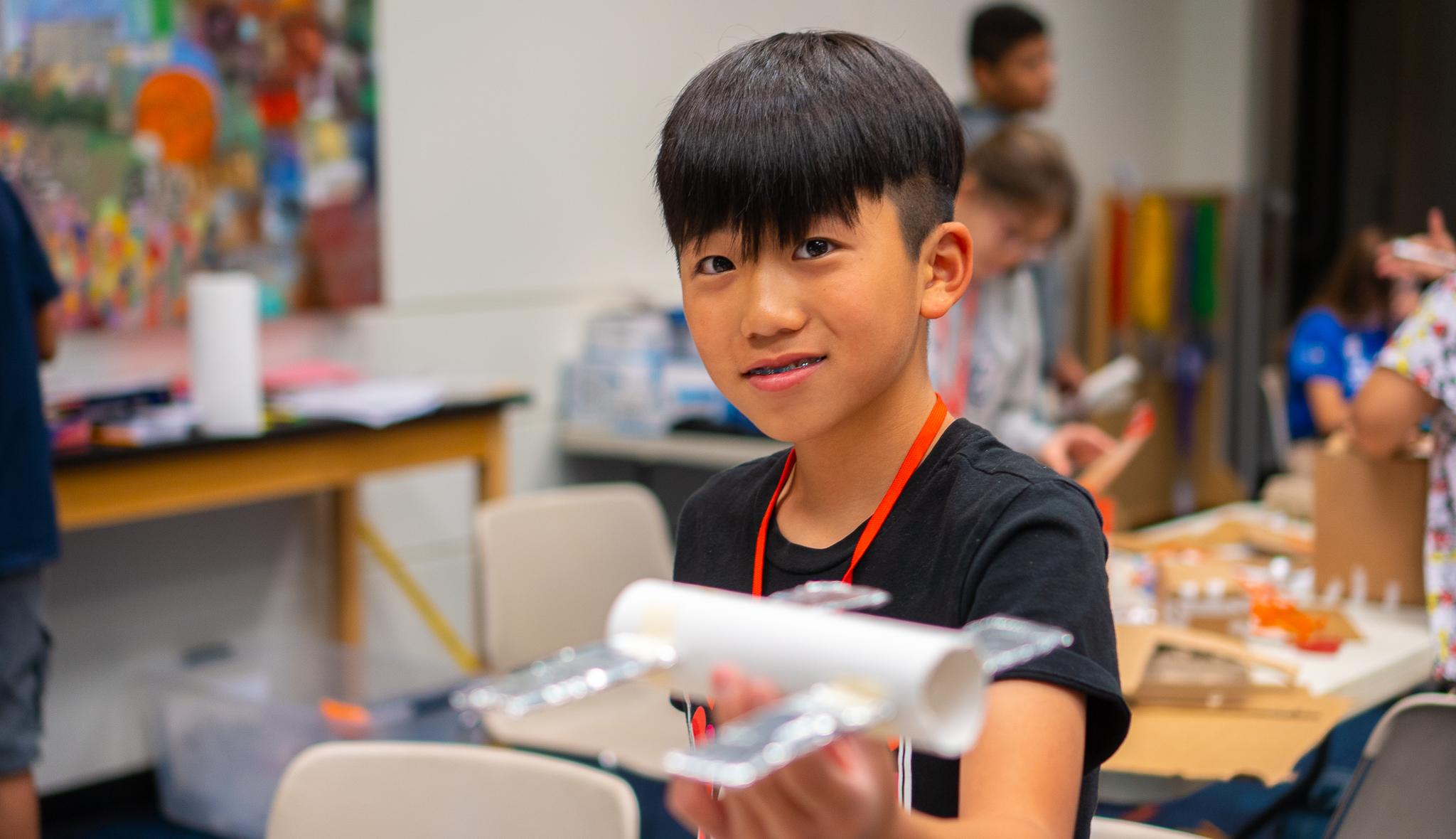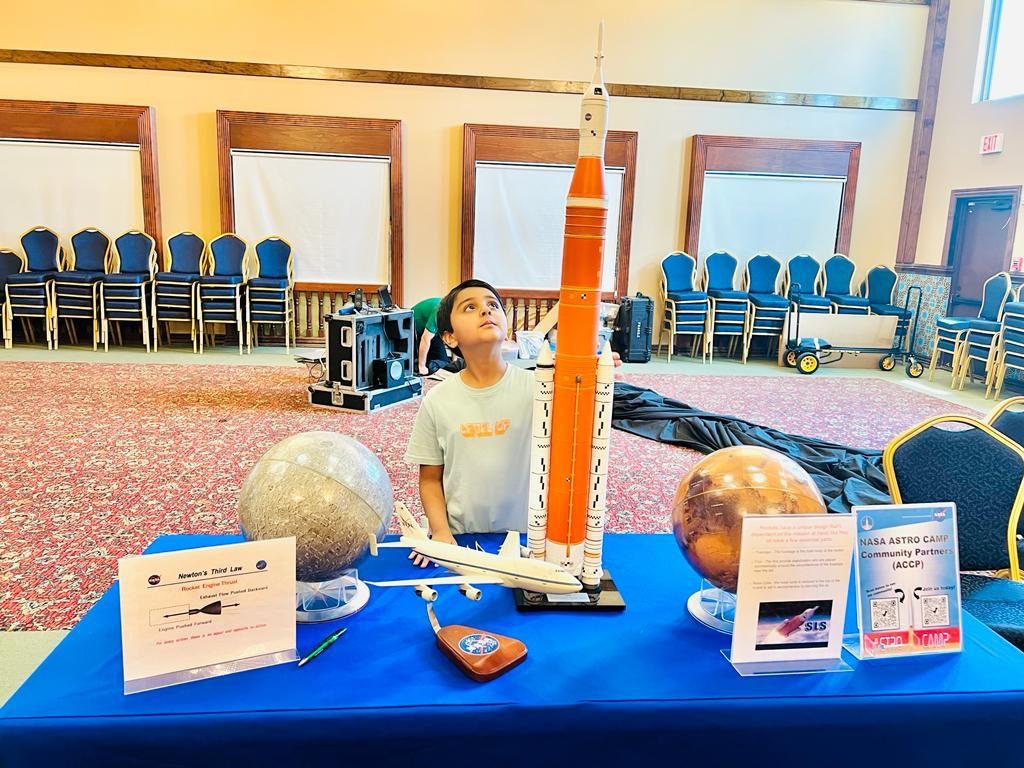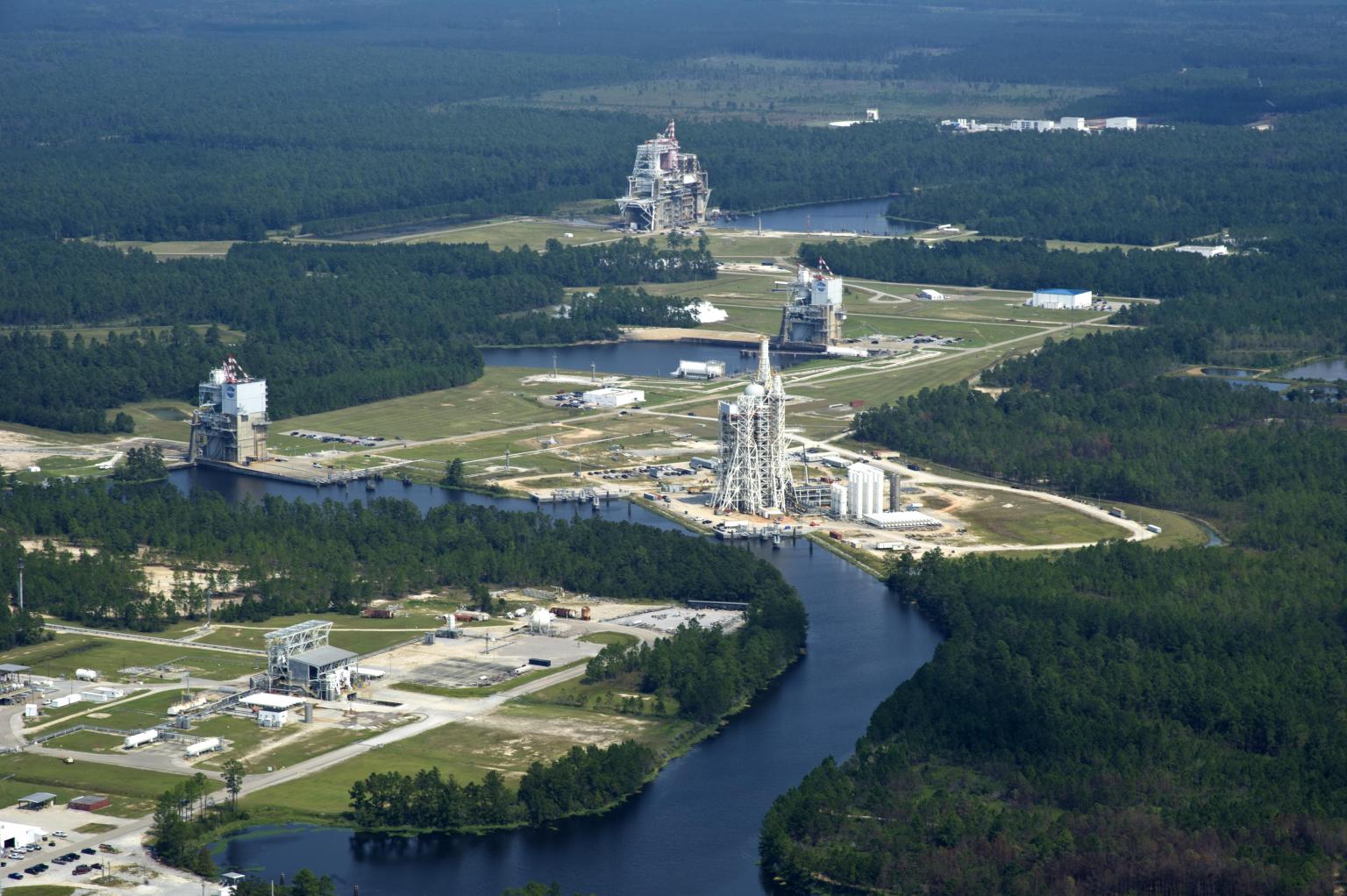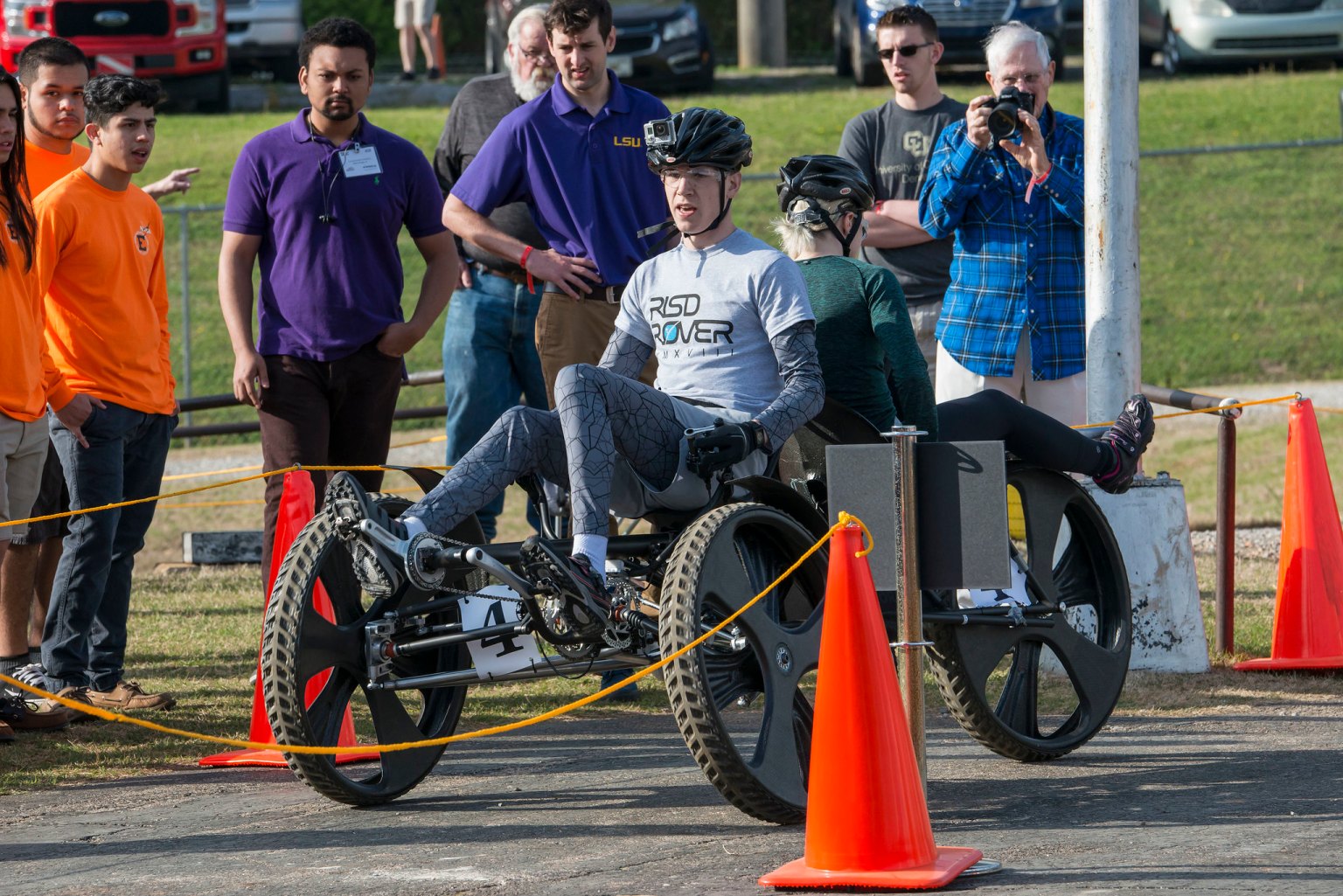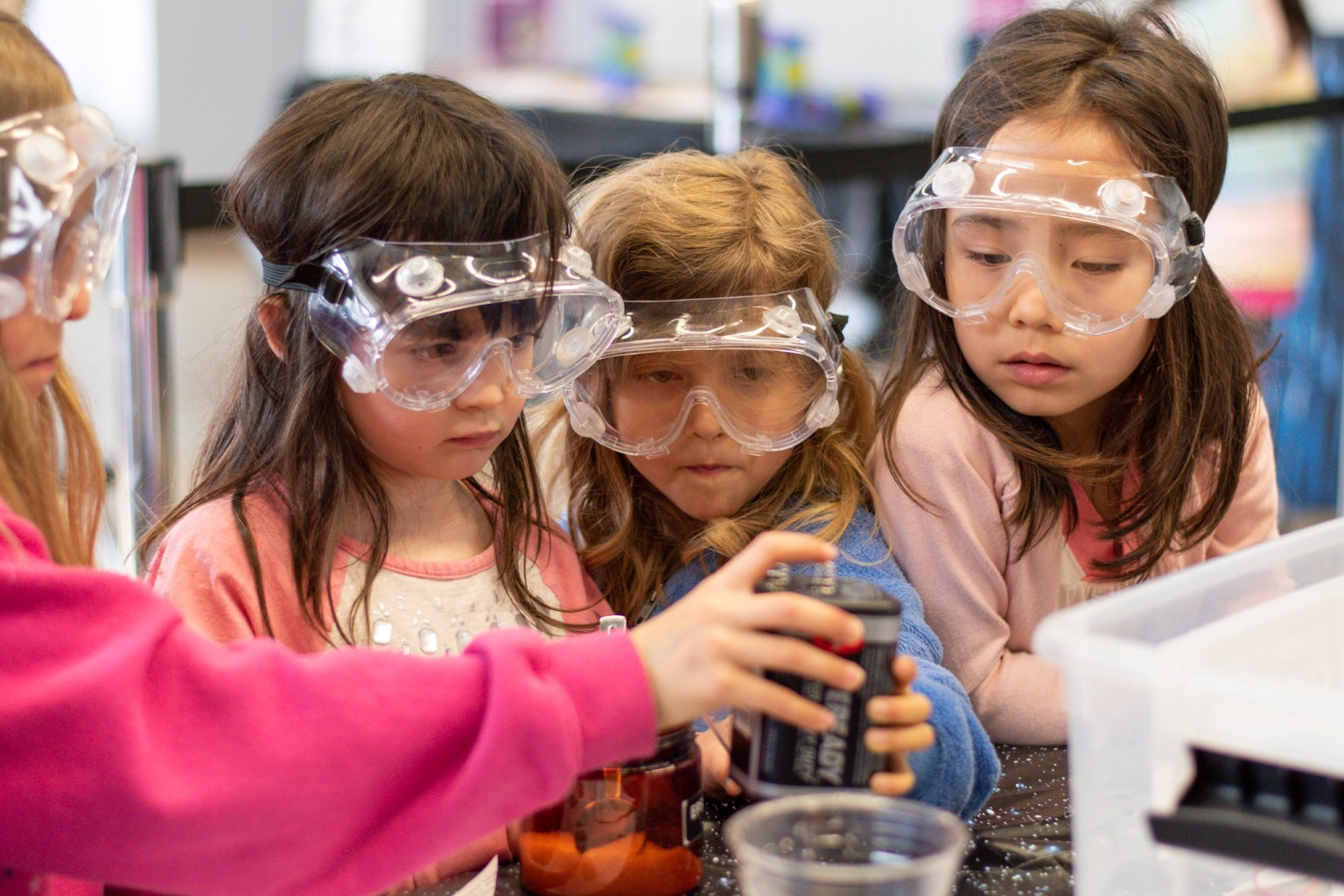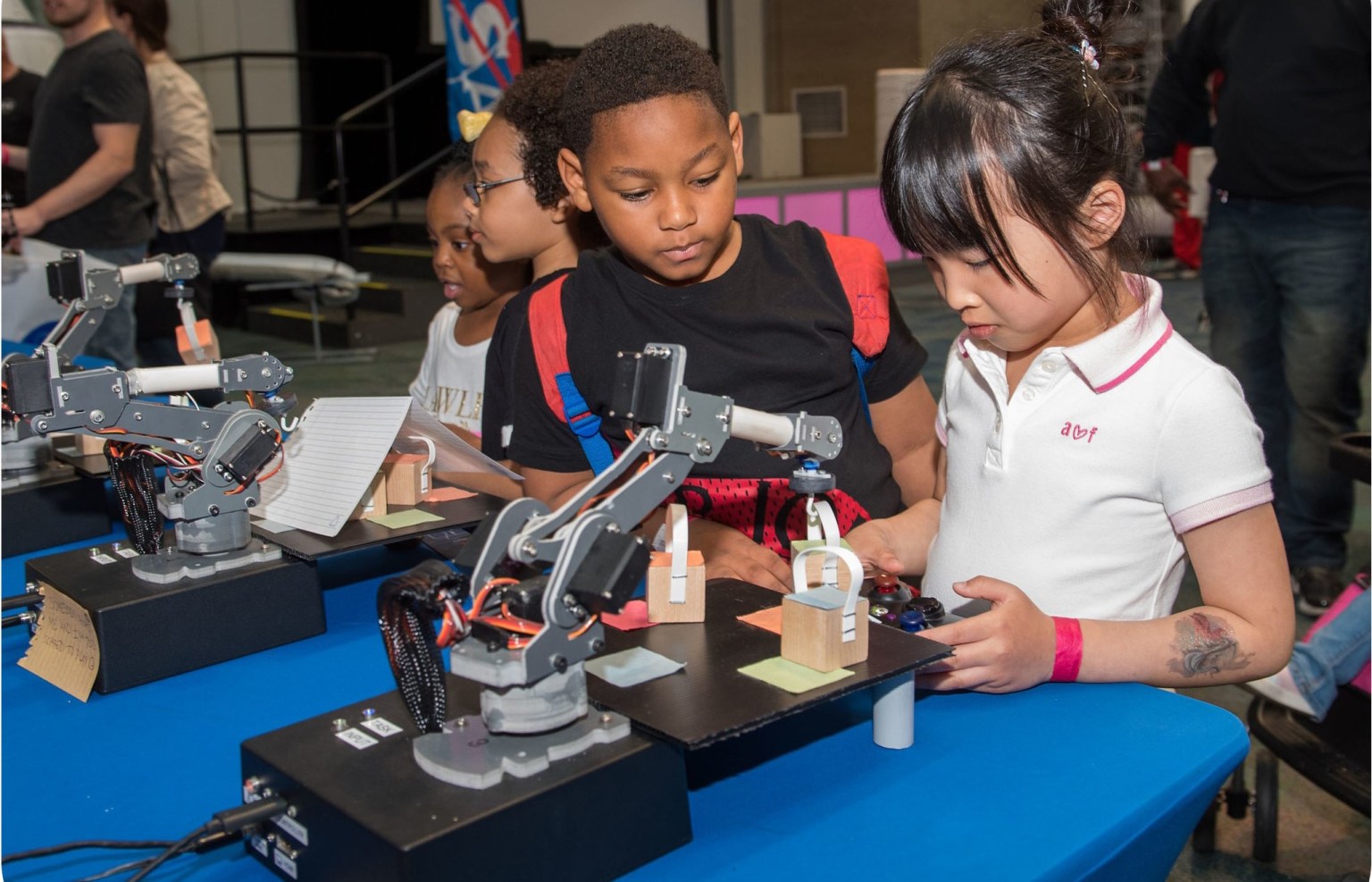65 Years Ago: NASA Formally Establishes The Space Task Group
On Oct. 1, 1958, NASA, the newly established agency to lead America’s civilian space program, officially began operations, with T. Keith Glennan and Hugh L. Dryden as administrator and deputy administrator, respectively. One of the new agency’s top priorities involved the development of a spacecraft capable of sending a human into space and returning him safely to Earth. On Oct. 7, Glennan approved the project, and the next day informally established the Space Task Group (STG) to implement it. On Nov. 5, the STG formally came into existence, with Robert R. Gilruth named as project manager and Charles J. Donlan as his assistant. In January 1959, the STG selected a contractor to build the spacecraft for Project Mercury and in April chose the seven astronauts to fly it in space.
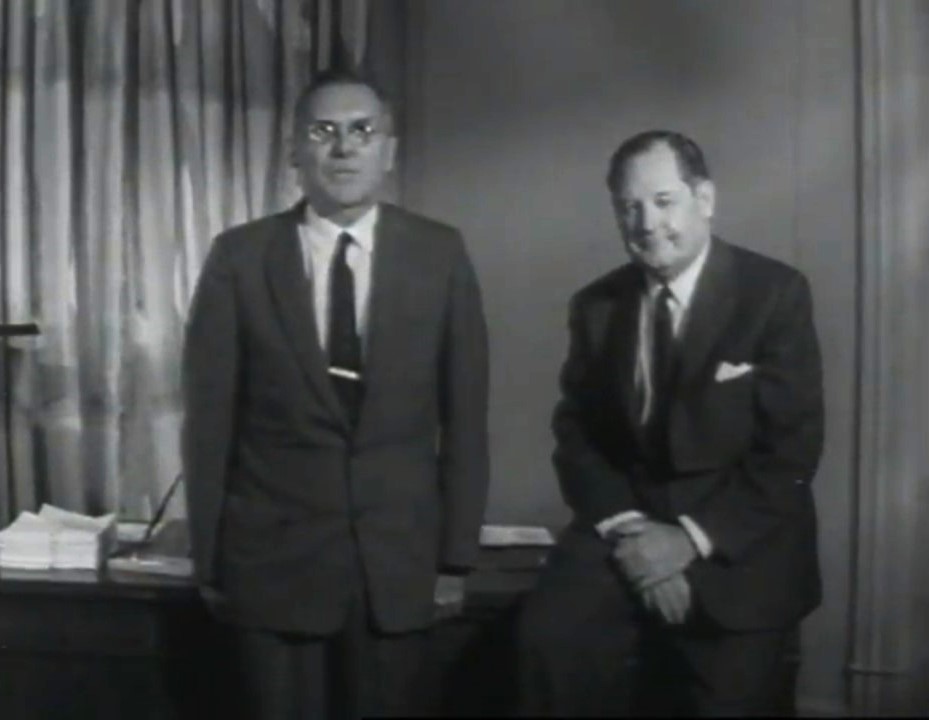
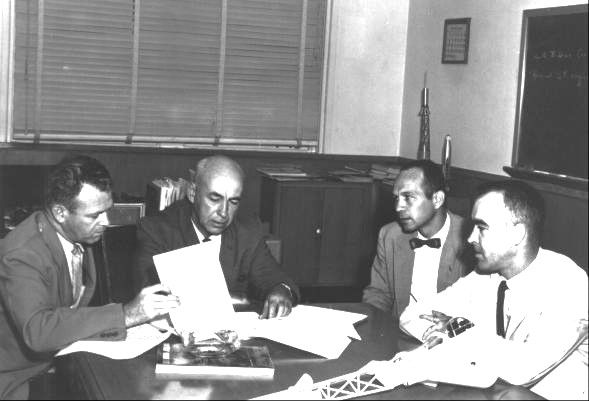
Left: NASA Deputy Administrator Hugh L. Dryden, left, and NASA Administrator T. Keith Glennan address the employees of the newly established NASA. Right: Space Task Group leaders Charles J. Donlan, left, Robert R. Gilruth, Maxime “Max” A. Faget, and Robert O. Piland at NASA’s Langley Research Center in Hampton, Virginia.
Glennan established the STG at the newly renamed Langley Research Center in Hampton, Virginia. Thirty-five Langley employees plus 10 more detailed from the Lewis Research Center in Cleveland, Ohio, formed the initial core of the STG. In early 1959, 25 engineers from AVRO Canada added their talents to the core team, with more following later. Since 1952, when the Langley Aeronautical Laboratory formed a part of the National Advisory Committee for Aeronautics, NASA’s predecessor agency, engineers there including Gilruth and Donlan had studied the problems associated with putting humans in space. An engineer named Maxime “Max” A. Faget, who in the STG led the Flight Systems Division, had determined that a cone-shaped object with a blunt end to act as a heat shield during reentry into Earth’s atmosphere would make the optimal spacecraft for humanity’s first foray into space. When presented to Glennan on Oct. 7, 1958, he approved the project by saying, “Let’s get on with it.”
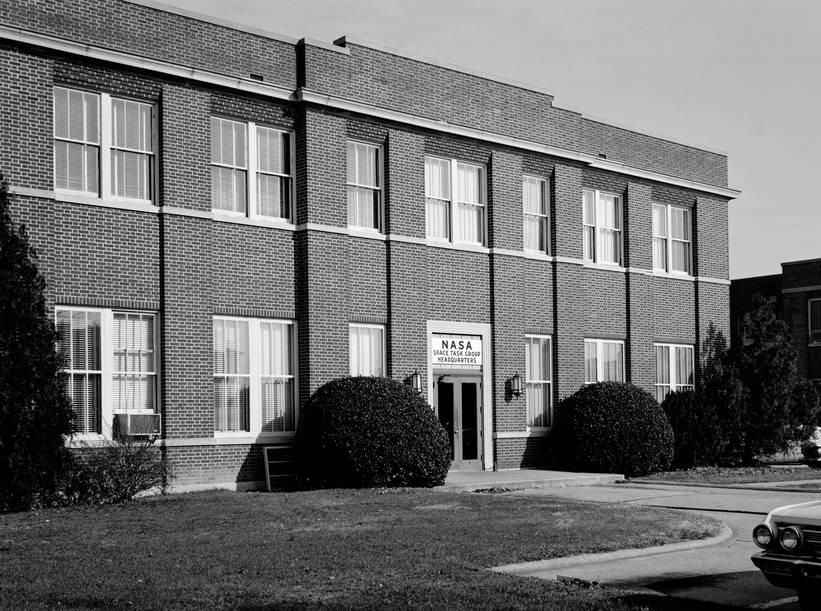
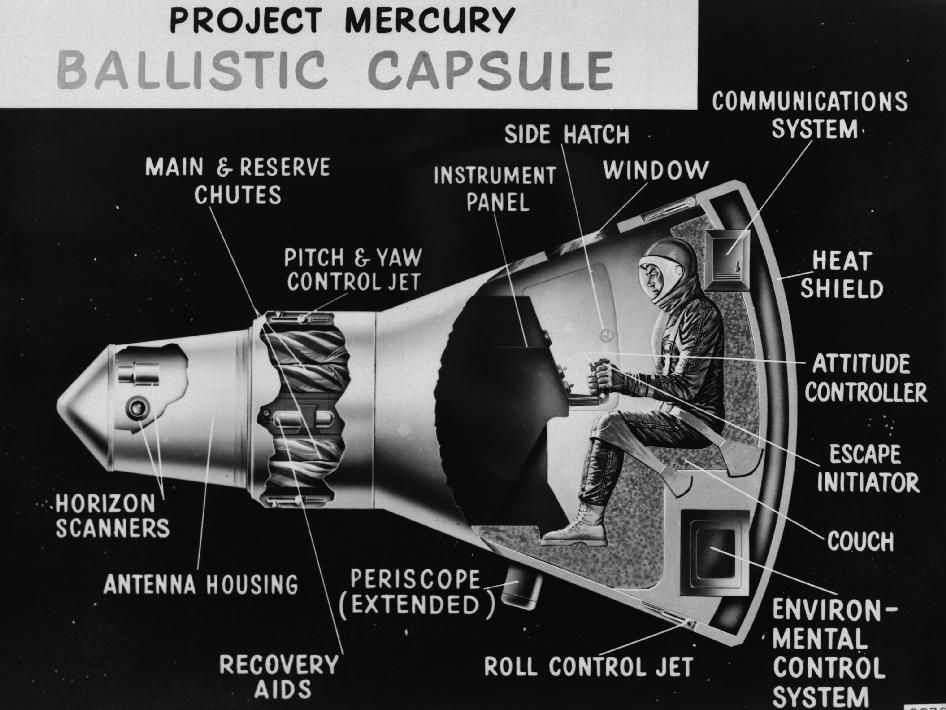
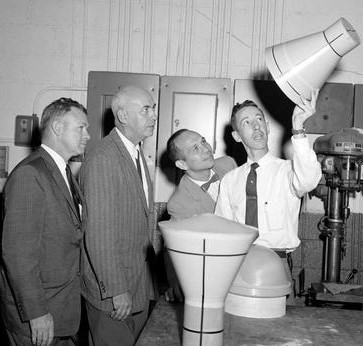
Left: The headquarters building for the Space Task Group (STG) at NASA’s Langley Research Center in Hampton, Virginia. Middle: An early cutaway representation of the Mercury capsule. Right: A technician, right, demonstrates a model of a Mercury spacecraft to STG leaders Charles J. Donlan, left, Robert R. Gilruth, and Maxime “Max” A. Faget.
The advance work allowed STG engineers to quickly draft specifications for the crewed capsule. The STG presented the project to representatives of 40 companies on Nov. 7, and 10 days later mailed detailed specifications to 20 firms that had expressed an interest in submitting a proposal. On Nov. 26, NASA formally designated the project as Project Mercury. Eleven companies submitted proposals by the Dec. 11 deadline, and STG engineers began reviewing them the next day. On Jan. 9, 1959, NASA selected the McDonnell Aircraft Corporation of St. Louis as the prime contractor to develop and build the Mercury spacecraft. McDonnell delivered the first three capsules within 12 months. Plans for the program envisioned suborbital and orbital missions, in both cases beginning with uncrewed test flights, followed by flights with primates, leading eventually to astronaut missions. Suborbital flights would utilize the Redstone missile with orbital flights using the larger Atlas rocket. On Dec. 8, 1958, NASA ordered nine Atlas missiles from the U.S. Air Force.
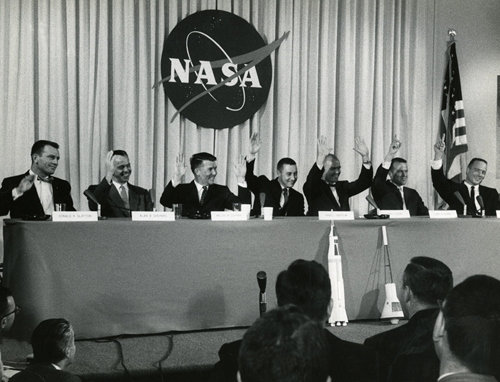
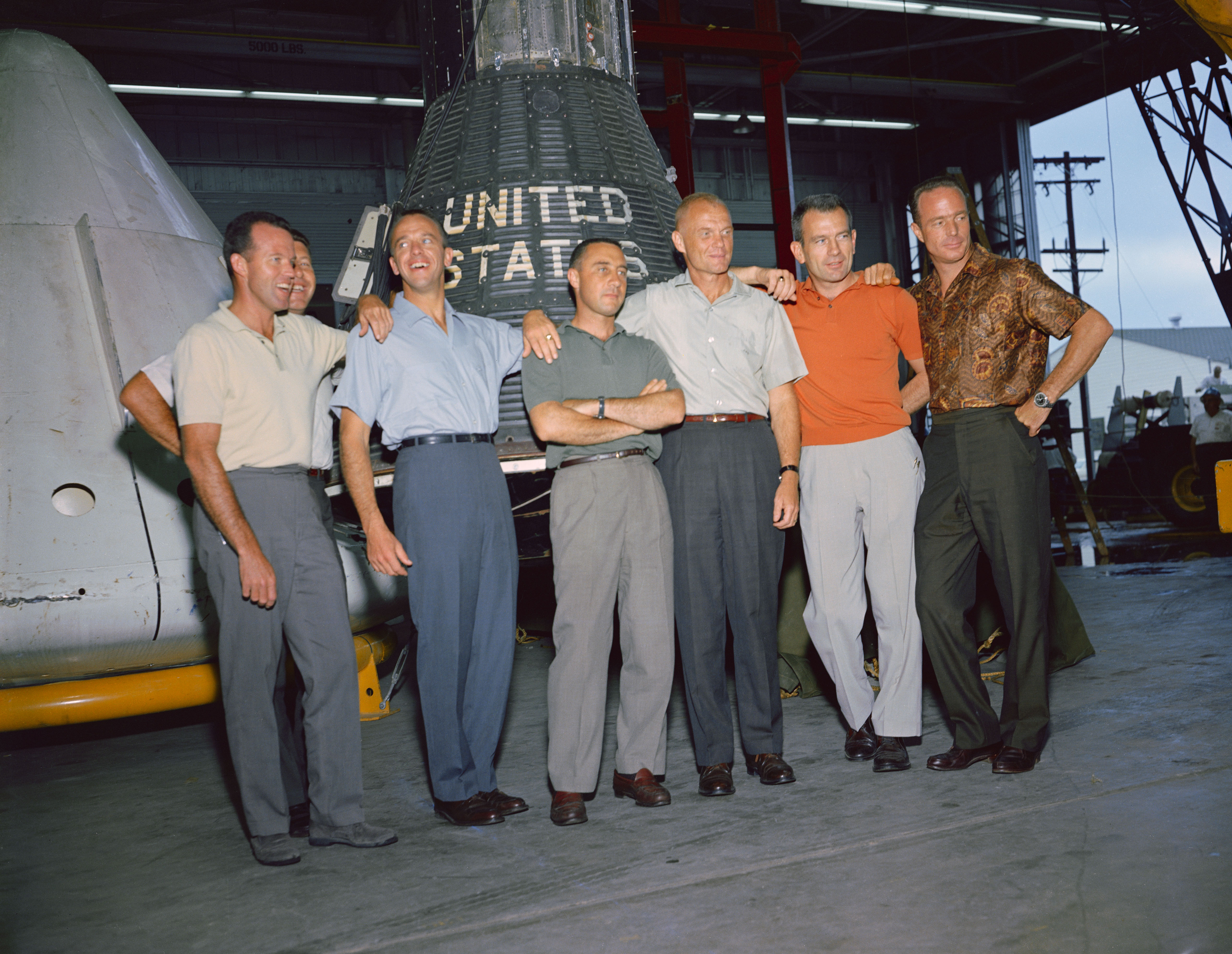
Left: The Mercury 7 astronauts Donald K. Slayton, left, Alan B. Shepard, Walter M. Schirra, Virgil I. “Gus” Grissom, John H. Glenn, L. Gordon Cooper, and M. Scott Carpenter during their introductory press conference. Right: The Mercury 7 astronauts in a more relaxed setting in front of a Mercury capsule at Ellington Air Force Base facilities leased by the Manned Spacecraft Center, now NASA’s Johnson Space Center in Houston.
In addition to building the spacecraft, the STG focused its attention on selecting the pilots to fly it. President Dwight D. Eisenhower decided that military test pilots would make the most suitable astronauts. On Jan. 5, 1959, NASA established the qualifications for the astronauts: less than 40 years of age; less than 5 feet 11 inches tall; excellent physical condition; bachelor’s degree or equivalent; graduate of test pilot school; and 1,500 hours of jet flight time. A screening in late January of the files of 508 graduates of the Navy and Air Force test pilot schools who met the basic age and flying requirements resulted in 110 qualified candidates. The selection committee ranked these candidates and divided them into three groups of about 35 each. The first two groups, comprising 69 candidates, received classified briefings at the Pentagon about the Mercury spacecraft and their potential participation. From this group, 53 volunteered for further evaluation and NASA decided not to call in the third group of candidates. Following an initial medical screening, 32 from this group advanced to undergo thorough medical evaluations at the Lovelace Foundation for Medical Education and Research, commonly known as the Lovelace Clinic, in Albuquerque, New Mexico. Beginning on Feb. 7, the candidates in six groups of five or six spent one week at Lovelace undergoing comprehensive medical examinations. From there, 31 of the 32 (one candidate failed a blood test at Lovelace) advanced to the Aero Medical Laboratory at Wright-Patterson Air Force Base in Dayton, Ohio, where weeklong testing of the six groups took place between Feb. 15 and March 28. Rather than simply examining them physically, testing at AML consisted of stressing the candidates in centrifuges, altitude chambers, and other devices to gauge their reactions. The selection committee met at Langley in late March and based on all the available data selected seven candidates for Project Mercury. The 24 unsuccessful candidates were notified by telephone on April 1 with a follow up letter from Donlan on April 3, also advising them to apply for any possible future astronaut selections. The seven selected as Mercury astronauts received telephone calls from Donlan on April 2. On April 9, NASA Administrator Glennan introduced them to the public during a press conference at the Dolley Madison House, NASA’s headquarters in Washington, D.C. They reported for work at Langley on April 27.
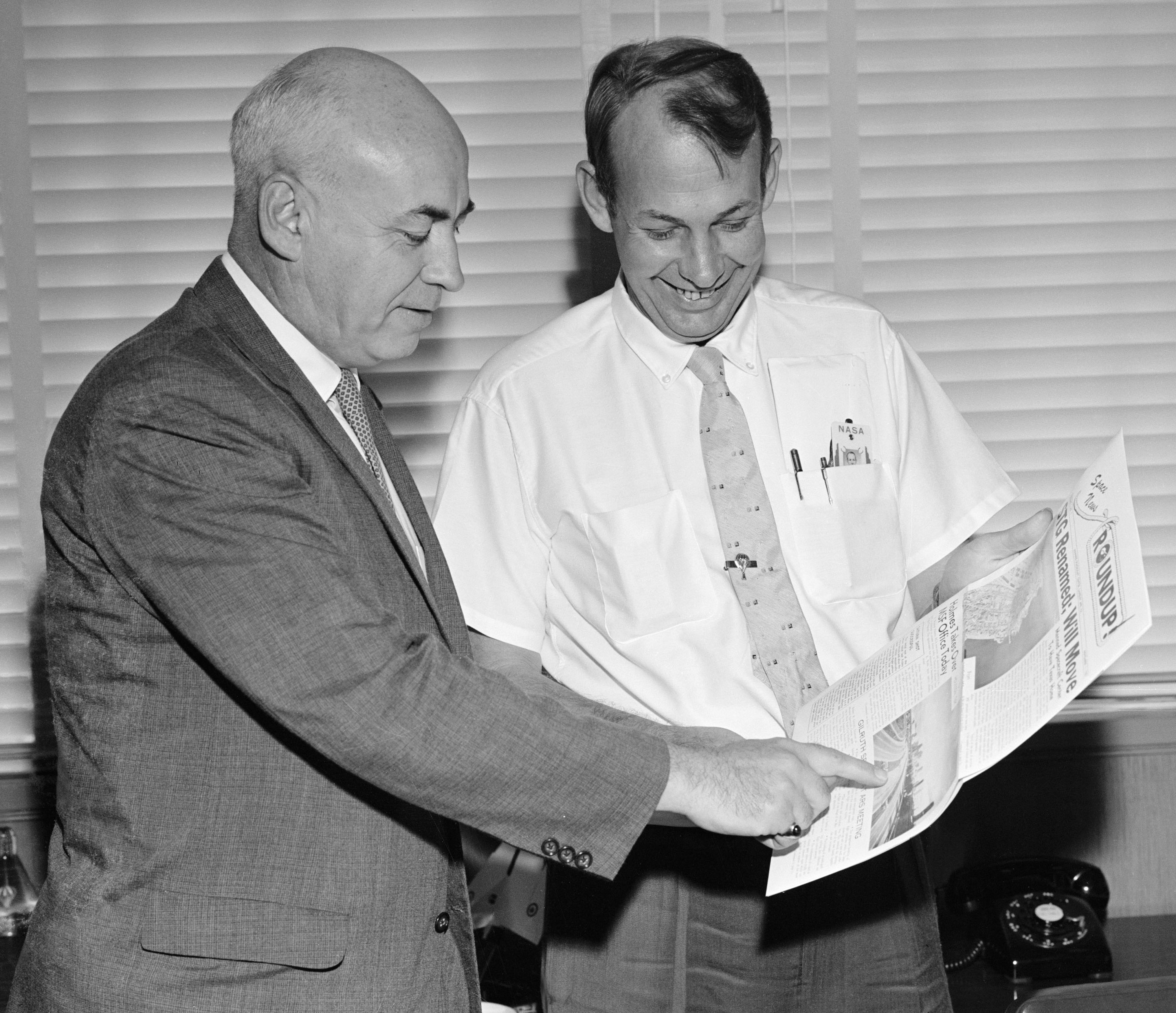
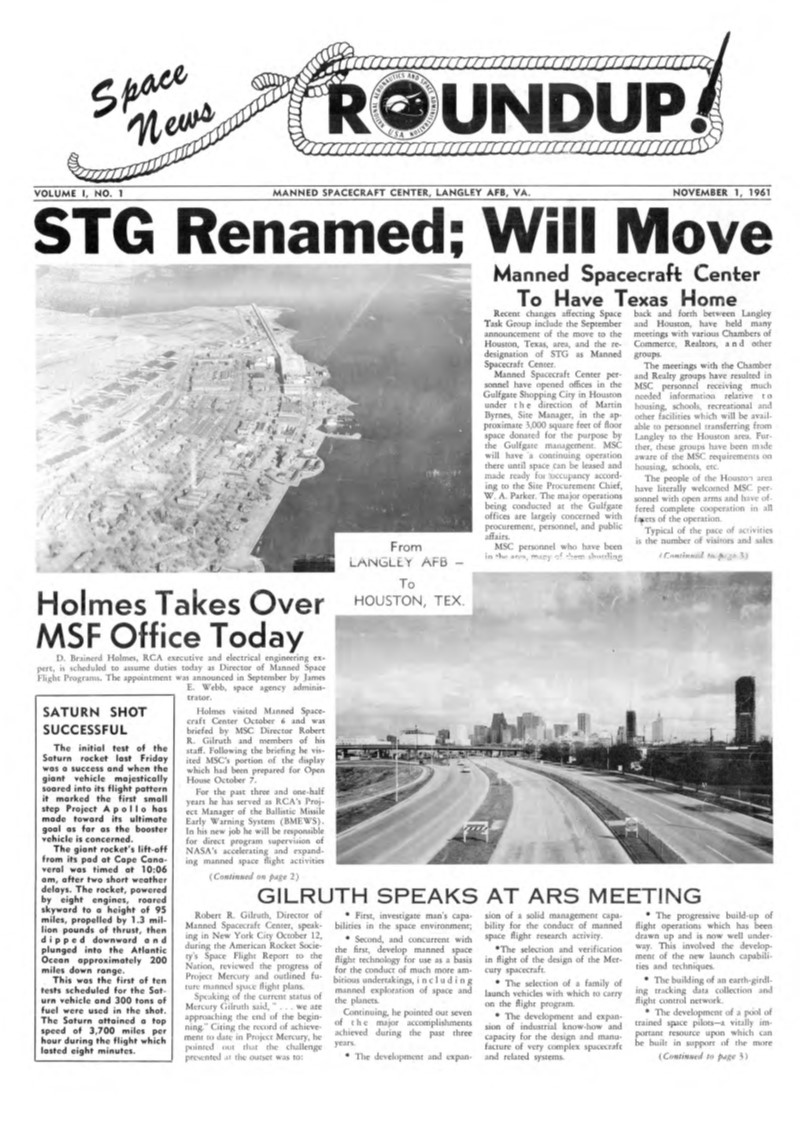
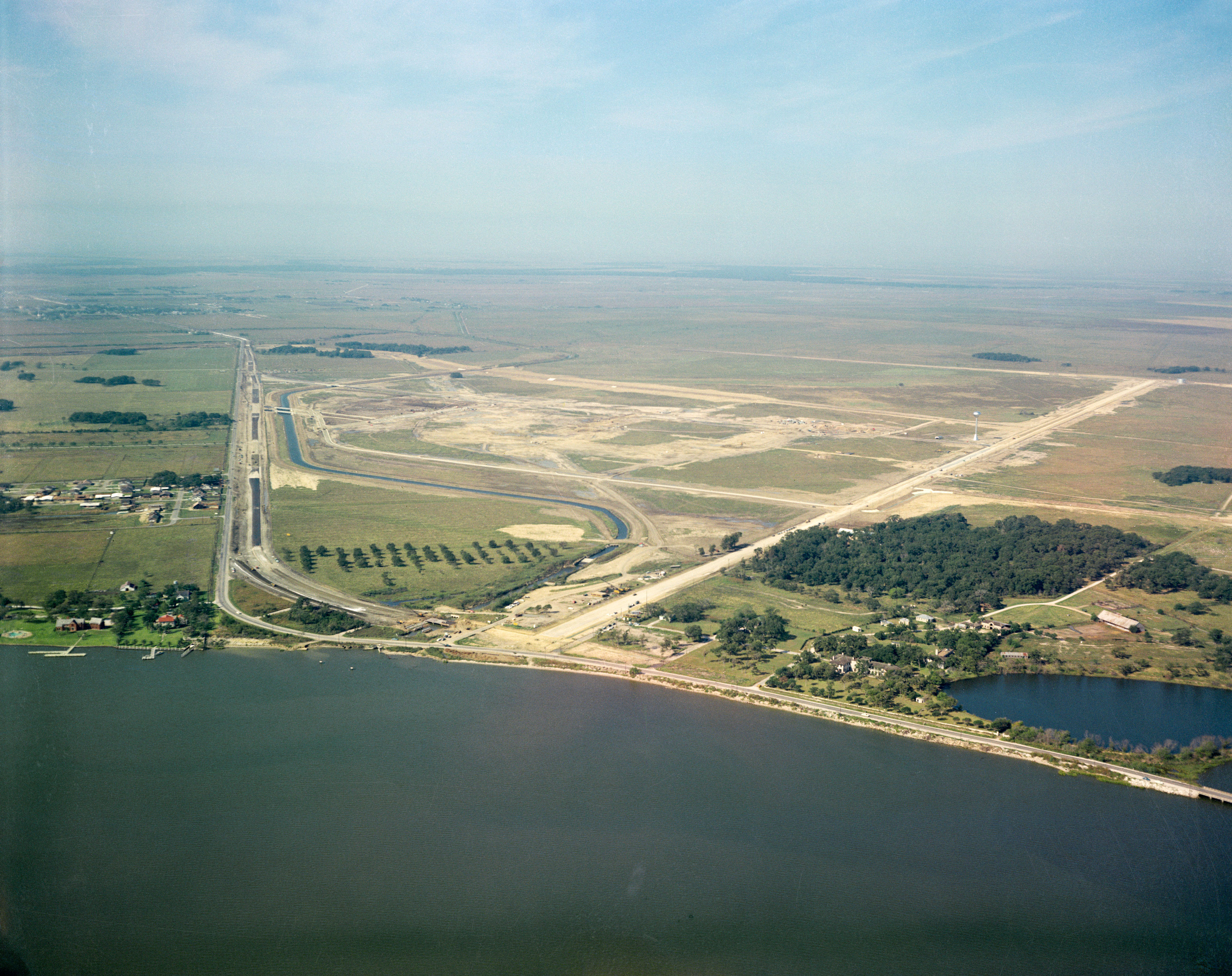
Left: Space Task Group (STG) Director Robert R. Gilruth, left, and his special assistant Paul E. Purser hold the Nov. 1, 1961, edition of the Space News Roundup employee newsletter announcing the move of the STG to Houston and its renaming as the Manned Spacecraft Center (MSC), now NASA’s Johnson Space Center. Middle: The initial edition dated Nov. 1, 1961, of the Space News Roundup. Right: The location of the MSC showing initial site preparation in 1962.
For the next two years, the STG busied itself with putting the first American in space as part of Project Mercury. Among other ground-breaking activities, this included overseeing the building of the Mercury spacecraft, training the astronauts, putting the necessary infrastructure in place such as Mercury Mission Control Center at Cape Canaveral, Florida, and a worldwide tracking network, acquiring Redstone and Atlas rockets from the U.S. Air Force, and working with the U.S. Navy to arrange for recovery of the astronauts after splashdown. The efforts paid off and on May 5, 1961, Alan B. Shepard became the first American in space during his 15-minute suborbital Mercury-Redstone 3 mission. Twenty days later, in an address to a Joint Session of Congress, President John F. Kennedy committed the nation to land a man on the Moon and return him safely to Earth before the end of the decade. The work to achieve this new challenge compelled the STG to seek larger facilities. Talk of a dedicated field center to manage human spaceflight begun in early 1961 intensified, with a site selection team established in August 1961. On Sept. 19, NASA Administrator James E. Webb announced the selection of a site 25 miles southeast of Houston on Clear Lake to build the Manned Spacecraft Center (MSC), now NASA’s Johnson Space Center, and named Gilruth as the center’s director. Although the STG ceased to exist in name, the work on Project Mercury continued at Langley, while advanced work on the Gemini and Apollo programs transitioned to the MSC’s temporary facilities in Houston as construction began on the new center on Clear Lake in April 1962. Although some STG personnel elected to remain in Virginia, 751 made the move to Houston, a workforce soon expanded by 689 new hires.
Powered by WPeMatico
Get The Details…
Kelli Mars



